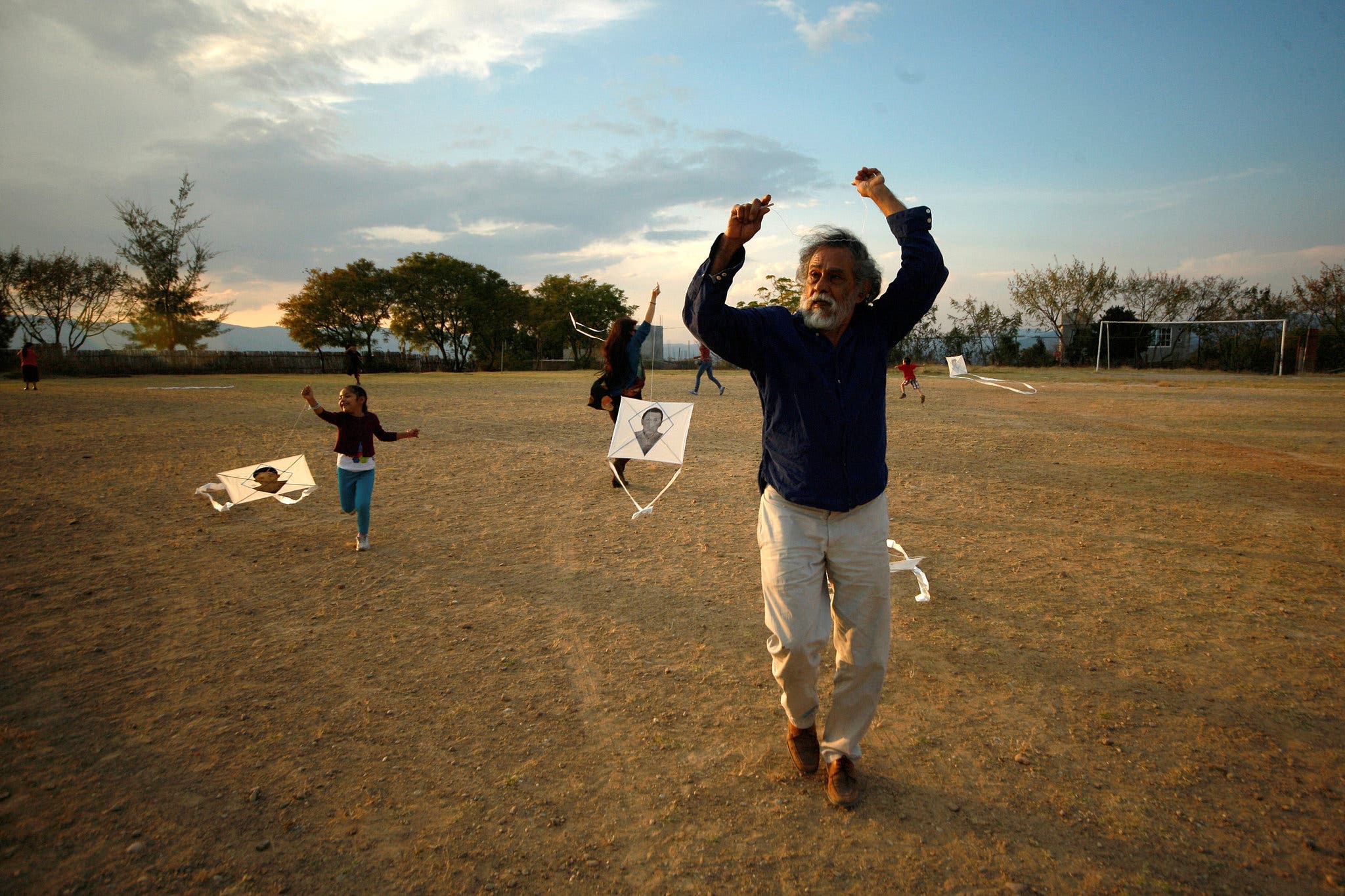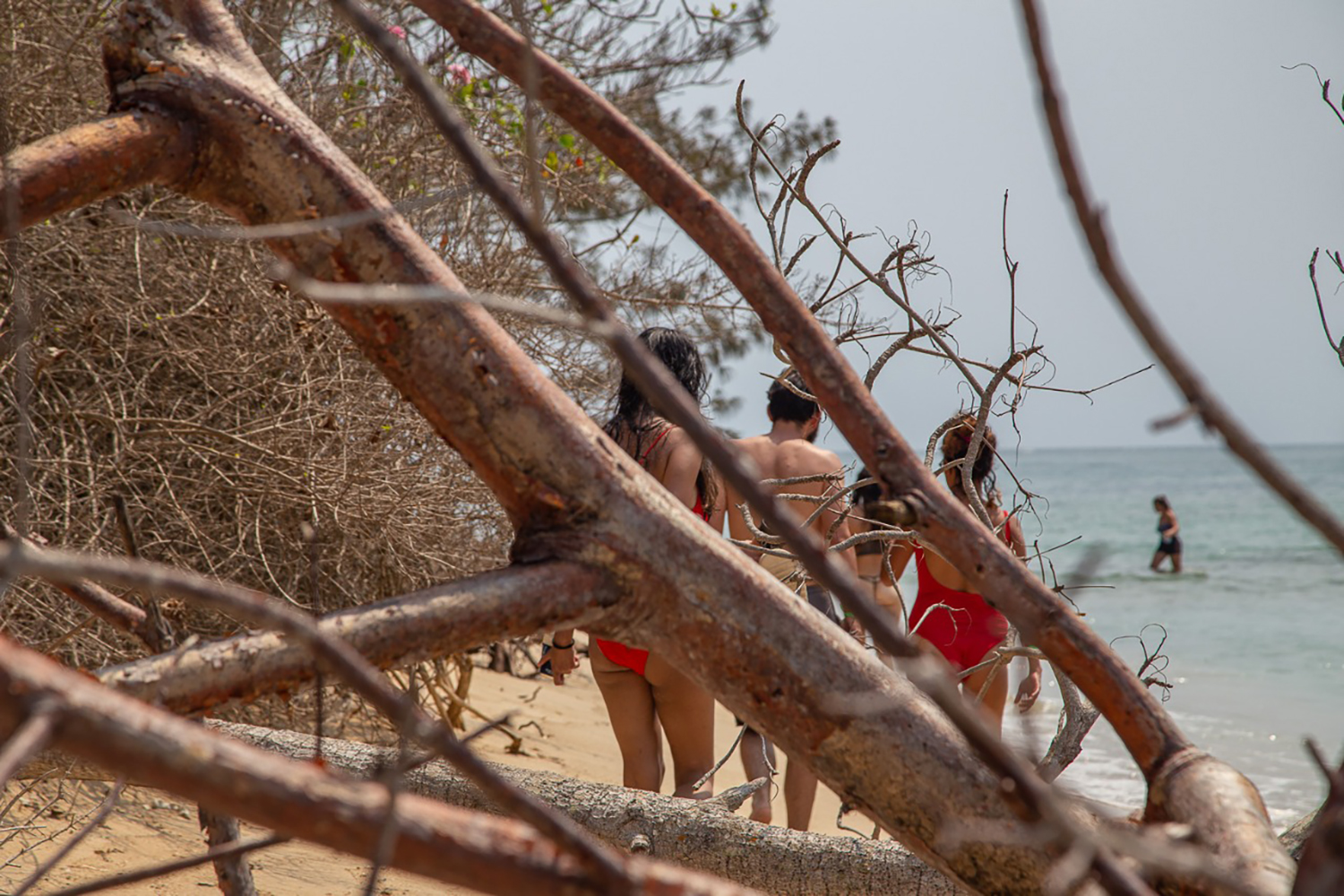Absent Bodies: Performative Strategies of Research, Complaint, and Presence
02/14/2024
The body remains inseparable from its image; the body is always its own image. But that image becomes representation only when the body that sustains it is prescinded, when the body is absent, or when the body is deprived of that which defines it as a subjective body.
In Latin America, the phenomenon of forced disappearance has taken place in the context of civil-military dictatorships, internal armed conflicts, counterinsurgency wars, anti-terrorist and drug control wars; moreover, it has manifested itself more precipitously and intensely in certain periods in some countries.
This phenomenon is extended, in the Latin American context, in a decade in which forced disappearance emerges with force, derived from the massive and arbitrary detentions carried out in Chile and Argentina after the military coups of 1973 and 1976, respectively. Enforced disappearance became massive and widespread in relatively short periods during the military dictatorships. The Latin American context, marked by military coups in Argentina and Chile, and reinforced by military dictatorships in Paraguay, Uruguay, Brazil and Guatemala, constituted a possible reality for the rest of the Latin American countries.
In Colombia, all armed actors, including state forces, have used disappearances as part of their repertoire of violence: in the last four decades of conflict, this type of crime has been sustained.
According to the Single Registry of Victims (RUV), as of December 2022, there were 190,889 victims of forced disappearance: 50,911 direct and 139,978 indirect, i.e., their relatives. In turn, the Information System Network of Missing Persons and Corpses (SIRDEC) of the Institute of Legal Medicine reports 3,340 missing persons in 2021 and 3,652 in 2022 throughout the country (CNMH, 2022).1
In Mexico, during the 1970s, this practice was linked to a populist governance, with a strong, centralized and authoritarian State, which used differential policies for the treatment of dissidents, applying multiple forms of repression.
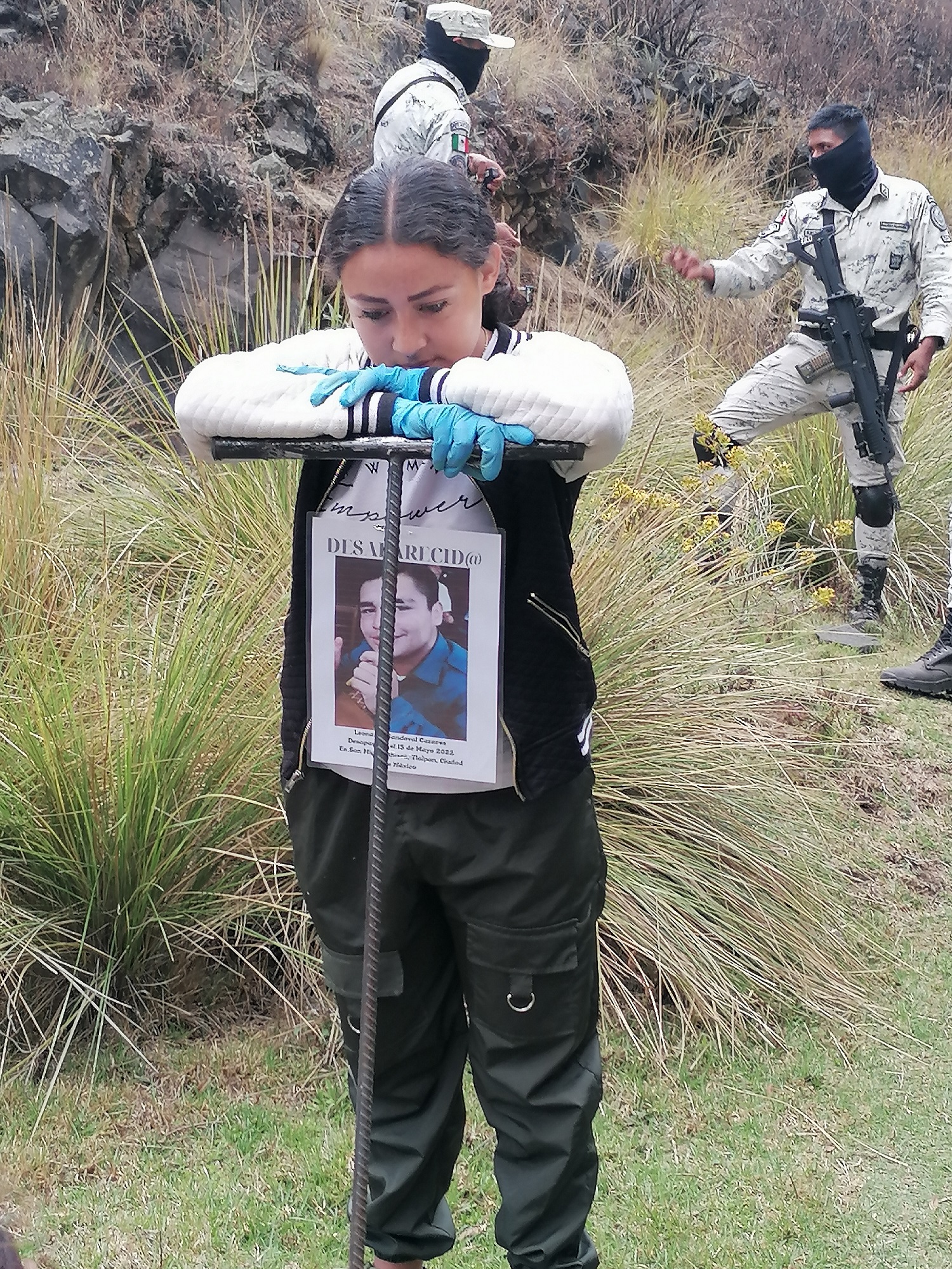
There is a continuity of forced disappearance in Mexico, although it adopts specific characteristics in two particular moments: the counterinsurgency struggle of the so-called "Dirty War" (in October 2021 the Commission for Access to Truth and Historical Clarification and Justice for Serious Human Rights Violations committed between 1965-1990 was created) and the so-called "War on Drugs and Organized Crime" from 2013 in the six-year term of Felipe Calderón Hinojosa.2
The extreme violence in Mexico since the so-called "War on Drugs" has led to an increase in the number of serious human rights violations and a steady rise in the number of victims. The disappearance of people is a painful reality in Mexico, amounting to 111,285 people, a figure that continues to grow (National Register of Disappeared and Missing Persons - RNPDNO, May 19, 2023).3
The cases of Colombia and Mexico call for a revision and complexification of the very concept of "forced disappearance of persons", since in its original definition it was considered a State crime, historically linked to dictatorial political regimes. In Mexico and Colombia, we observe a tendency towards a "perverse privatization" of this crime, with or without the participation of State officials, which has led both paramilitary forces and post-demobilization criminal gangs—in the case of Colombia—or organized crime, drug cartels and migration contexts—in the case of Mexico—to end up making this form of violence their own.
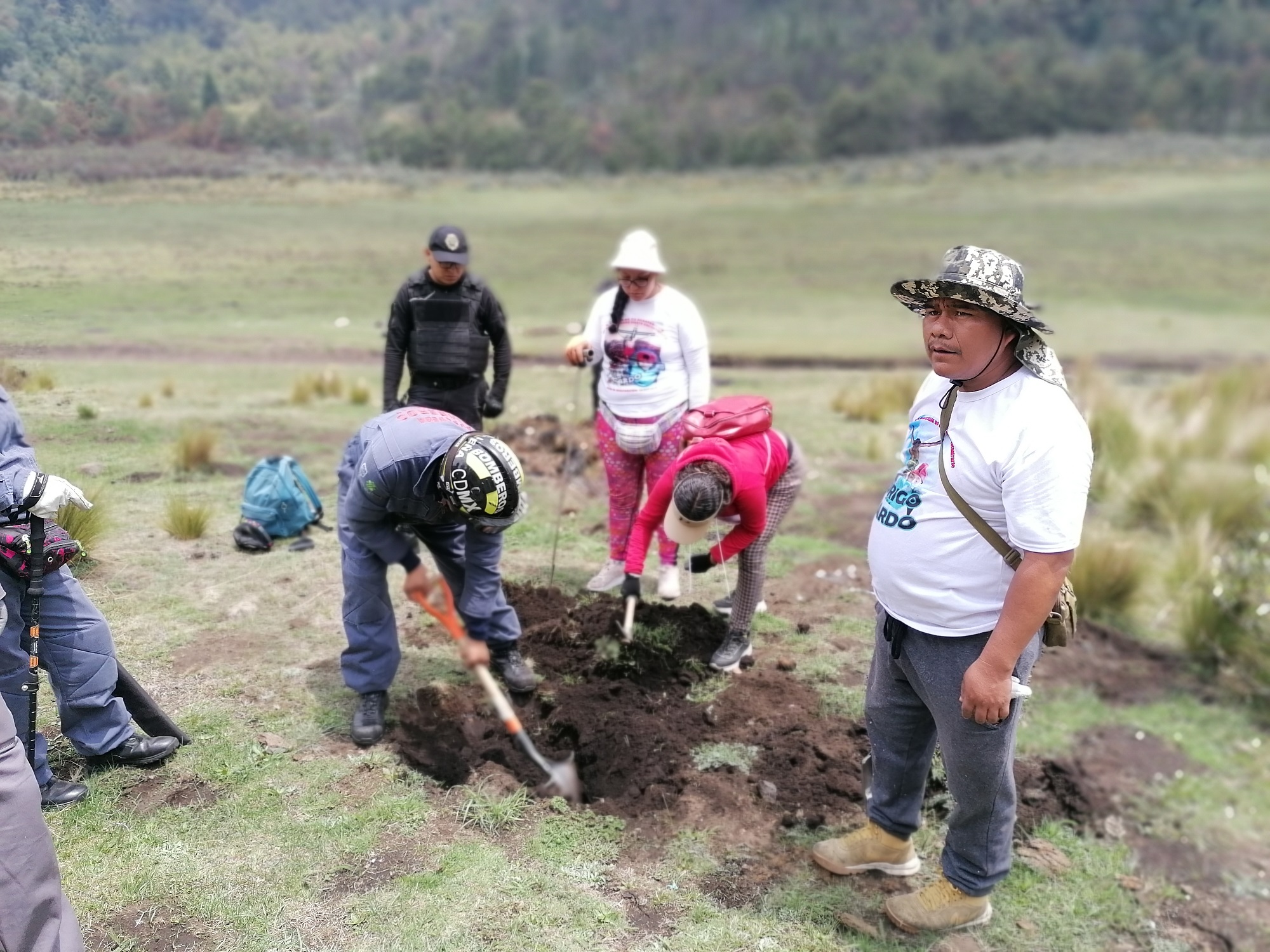

This reality has given rise to an enormous effort by relatives, friends, and interested persons to demand that the State comply with its task of searching for, locating, and providing justice for missing persons. This task has required them to organize, denounce, and persistently demand that the legal framework be established and, above all, that the necessary public policies be put in place.
The relatives of victims of enforced disappearance, both organized and unorganized, have been at the forefront in highlighting the magnitude of this phenomenon, mainly in the face of the inaction of the prosecutors' offices and the lack of specialized institutions, since the institutions set up to investigate disappearances in Mexico, no longer seem to respond to those traditionally established to investigate the victims of enforced disappearance. They are not special instances of investigation of the past but of daily justice.
It is in this violent context that new forms of denunciation and symbolic representation appear in the face of disappearance and the demand to search for them. Narrating their testimonies, marching, standing up, evidencing the spaces of horror through performative strategies; these are strategies to represent pain, re-found everyday life, proclaim the stories of absence and pain using diverse expressive means. Many of them are memories anchored in the body and in the senses that cannot be confined to mental or subjective spheres alone. These are material practices mediated by culture, with no artistic aspirations, which constitute strategies of representation; that is why it is feasible to speak of sound, visual, tactile, choreographic, scenic, etc., aesthetic practices. That is to say, corporal practices of political action opening new languages and spaces to make visible what is hidden by fear and violence. This is manifested through an aesthetic practice of denunciation that allows family members to give a new meaning to spaces that have been transformed by violence.
In Mexico, we observe the presence of collectives of relatives of disappeared persons such as the Red de Enlaces Nacionales (REN) [National Linking Network], and Fuerzas Unidas por Nuestros Desaparecidos en México FUNDEM [United Forces for Our Disappeared in Mexico], focusing on actions that can account for and be framed within artistic, cultural, symbolic representation and memorial practices and expressions related to forced disappearance. Between these two organizations, there are more than 200 search collectives throughout the country, who, despite not being close to the artistic field, have become actors and actresses, composers, singers, painters, and creators of new mechanisms to tell their stories and make their demands. Some examples of these practices are the performative actions carried out by the Luciérnagas de media noche [Midnight Fireflies] collective, from the state of Morelos, promoted by family members in search and artistic collectives through the National Fund for Culture and the Arts (FONCA); the project Narrativas y Memorias [Narratives and Memories], from the state of Puebla, developed by the artistic collective Técnicas Rudas [Tough Techniques] and family members in search, who carry out performative, sound, and plastic gestures; the Colectivo una luz en el camino [A light in the road], which carries out aesthetic interventions in the Ajusco area, south of Mexico City, to make visible and denounce clandestine graves.
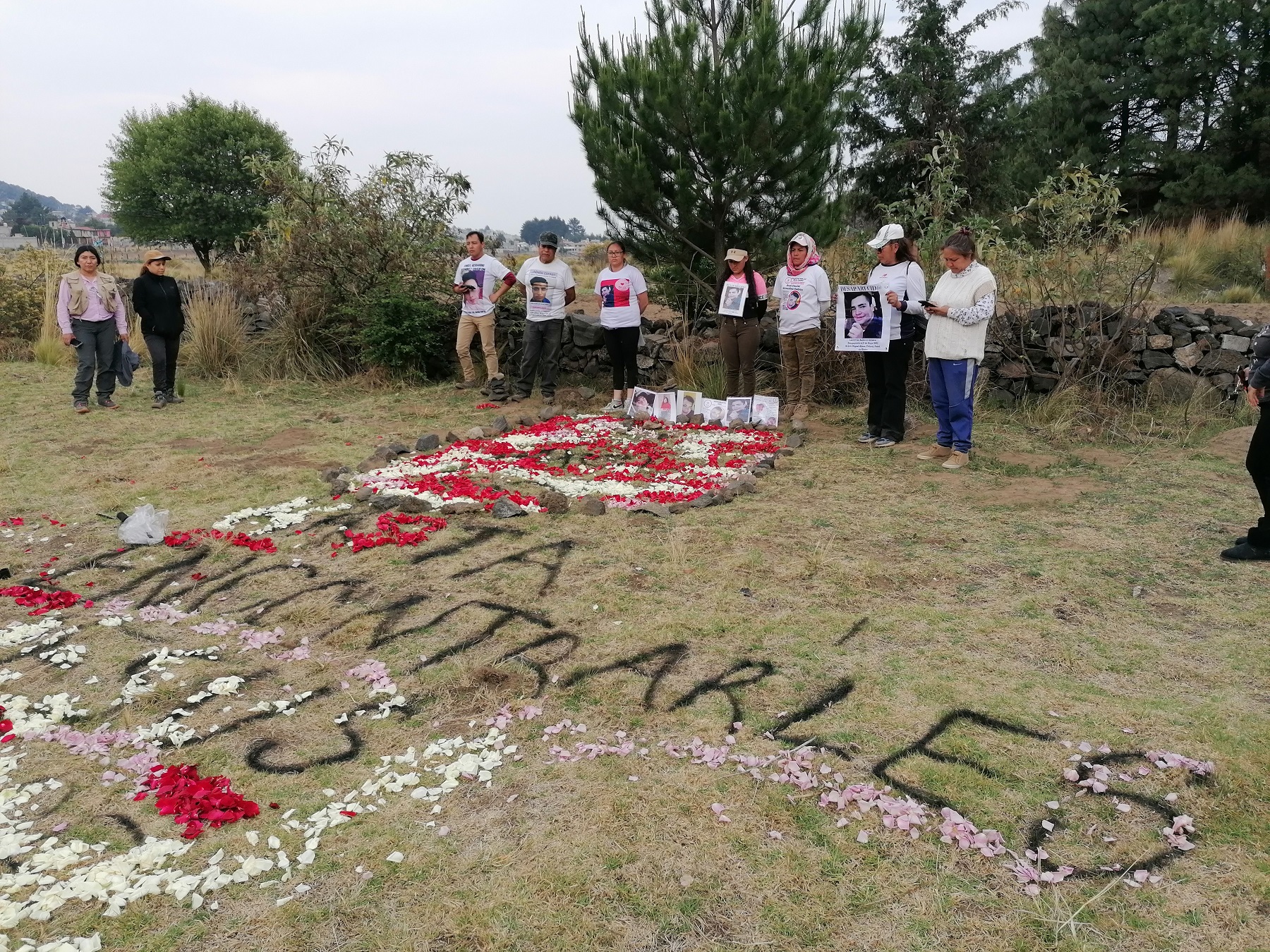
In the case of Colombia, there are hundreds of collectives, almost all of them at the local level. Such as the experience of Las Madres de la Candelaria–Línea Fundadora [The Mothers of La Candelaria-Founding Line] from Medellin; Asociación de Familiares Unidos por un Solo Dolor [Association of Relatives United for a Single Pain], which emerged in 2009 due to the forced disappearances that took place in the Colombian Caribbean since 2004; Colectivo de las Madres de Soacha, Tejedoras de vida [Collective of the Mothers from Soacha, Weavers of Life], which over the years of searching have formed a repertoire of aesthetic and representational practices, although the relatives in search carry out various activities that include juridical, legal, forensic, formative, field search, etc.
Other artists have addressed the forced disappearance from their practices and aesthetics, formats and languages, such as the exhibition Restablecer memorias [Restoring Memories], around the emblematic case of the forced disappearance of the 43 students of Ayotzinapa, by artist AiWeiwei, presented at MUAC-UNAM in 2019; Forensic Architecture’s exhibition Hacia una estética investigativa [Toward an Investigative Aesthetic], presented at MUAC-UNAM in 2017, also around the Ayotzinapa case; Performatividades de la búsqueda [Search Performativities], presented at the Galería Metropolitana UAM in 2022, bringing together various collectives of family members in search and artists; Proyecto Huellas de la Memoria [Traces of Memory Project], which emerged on May 10, 2013, and since then records the stories of people and the processes of search and struggle of their relatives in Mexico and Latin America. The strategy is to capture on the soles of shoes, through the technique of engraving, a message in the form of a story that names the missing person and recalls the day and place of the disappearance.

In Colombia, Juan Manuel Echevarría's photographic works Réquiem NN, Magdalenas por el Cauca [Magdalenas down the Cauca], and 327 huellas del olvido Gabriel Posada [327 traces of oblivion Gabriel Posada], in which the artist works with the families of the victims of the Magdalena and Cauca rivers. Felipe Botero’s El Ausente [The Absent] brings to the theatre stage the long wait for a corpse that cannot be buried. Umbral Teatro’s Donde se descomponen las colas de los burros [Where Donkey Tails Rot], or Tramaluna’s Antígonas, tribunal de mujeres [Antigone, Women’s Court] are other examples of dramatic works that deal with the issue of forced disappearance. Erika Dietes’ Río abajo [Down the River] also refers to the image of rivers and seas as rivers-tombs. To mention a few examples of these thresholds or liminal spaces where art, protest, denunciation, and search intersect.
The field of research on the phenomenon of enforced disappearance leads to itineraries that call for multidisciplinary approaches when considering studying violence—whether structural, cultural, or spatial—with an expanded typology that goes from direct damage to symbolic and epistemic. A disappearance means that no mourning can take place, and without mourning, there is no longer a clear line between life and death. For this reason, the relatives of a missing person can never return to a normal life. The endless suffering caused by the disappearance creates "concentric circles of silence"; gaps in the fabric of human communication that are leaving Mexican and Colombian societies full of holes.
The multifaceted understanding of the instrumentalization and exponential increase of enforced disappearance with the measurement of harm, agency and victimization, and the mobilization for the claim of truth and justice, have been approached from multiple disciplinary approaches: legal, forensic, historical, sociological, anthropological, and journalistic.
Given this panorama, studies are needed on the participation of artistic and cultural expressions that work around the symbolic and memorial representation of the forced disappearance as practices carried out by searching relatives, religious congregations, artists, journalists and academics, which allow opening spaces for the victims and convene claims for truth, justice, memory and non-repetition.
Faced with this reality, it is important to analyze the impact of artistic representations, acts of representation, of presence, carried out as acts of life. A direct action as a symbolic demonstration and the gaze as a subversive act. The various urban interventions, installations or performative actions, the artistic, cultural, symbolic representation, and memorial practices and expressions regarding the forced disappearance carried out by family members searching in the streets, squares, galleries, and other public spaces in Mexico and Colombia, show the changes that have been happening in artistic practices and social protest.
In the current scenarios, family members in search and citizens in general, put into action images and stories of the most recent collective memory: the political is not configured by the issues and themes, but especially by how relationships are built with life, with the environment, with others, with memory, culture with practices that are not exclusively artistic, involving family members in search, citizens and creatives, using aesthetic devices for the development of new discourses on enforced disappearance.4
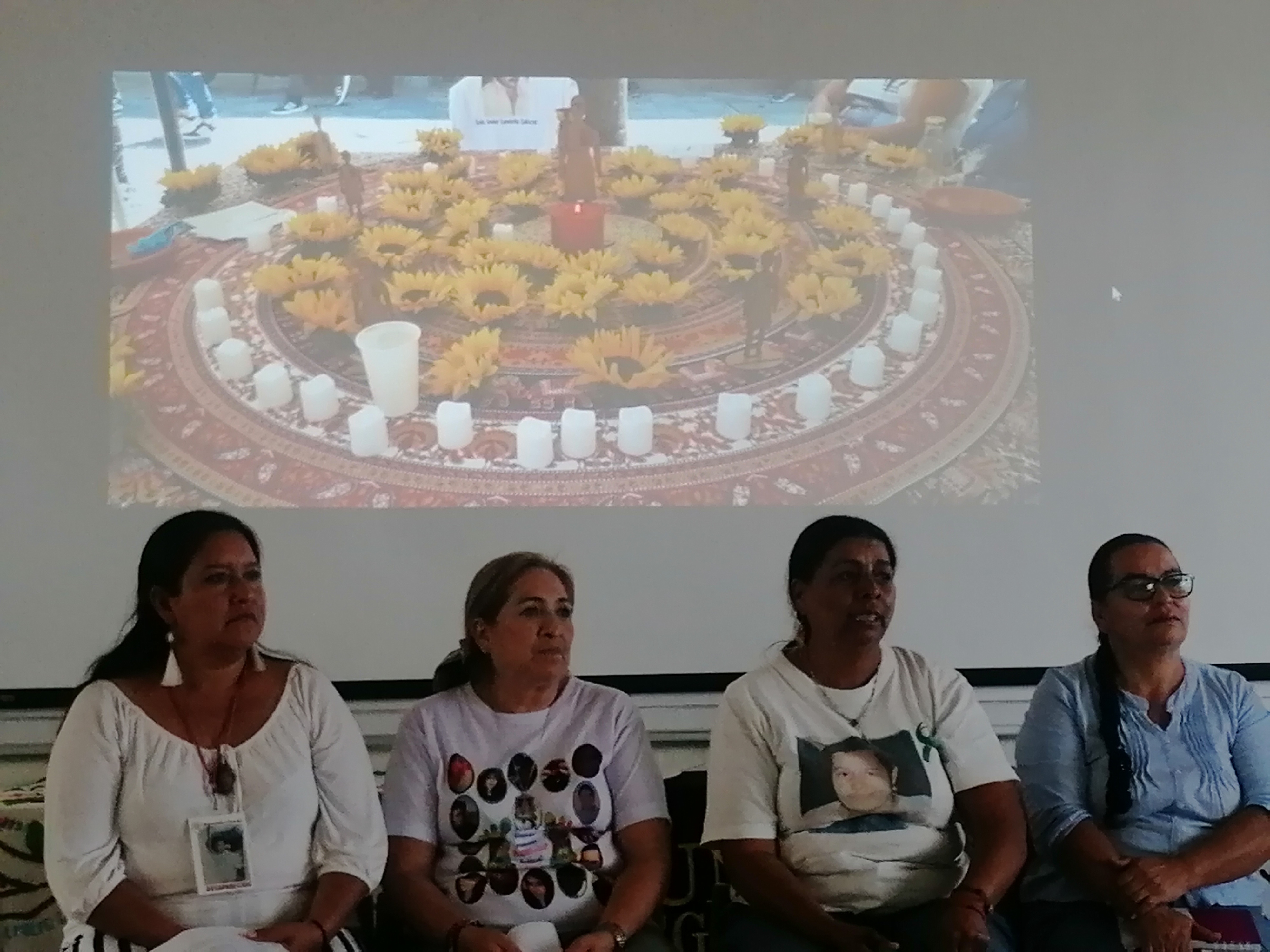

Diéguez proposes the figure of the "expanded body," which allows expressing the superposition of bodies that are configured in those who search for their loved ones. The liminal body is the bearer of a tissue of presences and absences, the expanded body that shelters and supports other bodies. We can recognize in them the burden they carry just by looking at them.5
The images generated and constructed from forensic aesthetics are not images of violence but images that evoke the violent act of the disappearance of people from the symbolic representation. They are images that strongly shake the gaze, capable of collecting the legacy of the absent, making present something that is missing in order to recognize the loss and suffering.
These images have the capacity to summon the presence of the traces left by the absence of that which is no longer there, presently alive to the gaze, and which allows the making of images as political testimony able to keep the memory and the heritage of the murdered and the disappeared. It is the representational capacity that attempts to transform the dominant logic that configures the frameworks of the visible and the decipherable, turning the representation of images of violence into a device to make visible the horror and pain of the absence of bodies. Is not the body precisely that resists representation, the unrepresentable real?
The body remains inseparable from its image; the body is always its own image. But that image becomes representation only when the body that sustains it is prescinded, when the body is absent, or when the body is deprived of that which defines it as a subjective body.
It is also necessary to address the field of memory, which is broad and involves societal processes through protests, demonstrations, and aesthetic initiatives. These were the families who began to reverse the repressive logic of the disappearances. When the perpetrators told them that their disappeared ones were dead and that they should stop seeking, the mothers responded with vehemence:
"They took them alive, we want them alive!” And when they have been told that there is no point in searching anymore, that they should forget, their answer has been: "If you are in our memory, you are not dead."

